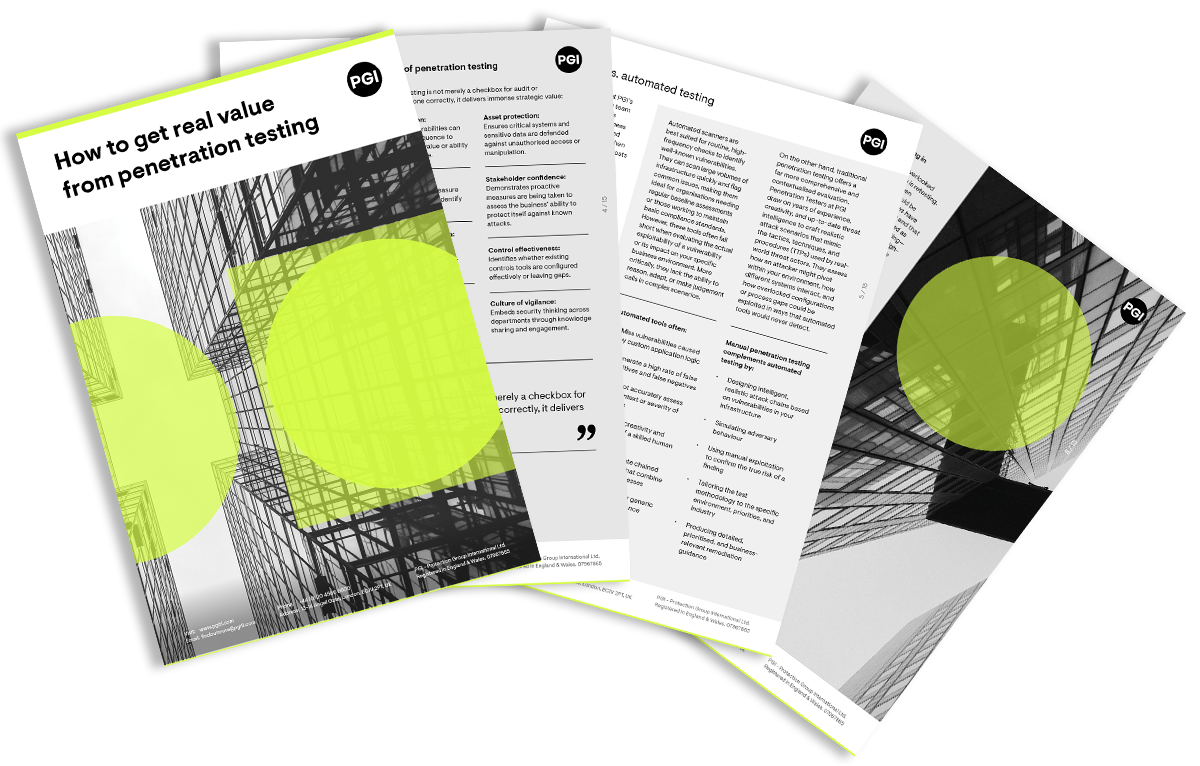Emerging threats

We support organisations striving to build a trustworthy, safe online environment where users can engage authentically in their communities.
Cross-sector corporatesWe support international government organisations and NGOs working to provide infrastructure or improve the capabilities, security and resilience of their nation.
International programmes and developmentWe support commercial organisations operating in a digital world, seeking to protect their reputation and prevent business disruption caused by cyber attacks and compliance breaches.
UK government and public sectorWe support UK government organisations responsible for safeguarding critical infrastructure, preserving public trust, and maintaining national security.



The simple truth is that to get a complete understanding of your risk posture, your security testing needs to include what information a threat actor can learn about your organisation.
With the explosion of publicly available information online, from employee details to company infrastructure, attackers are no longer limited to technical exploits to breach your defences. Access to this data, combined with AI-powered tools that help weaponise it, can give attackers a foothold into your organisation.
As a result, organisations face increasing exposure to sophisticated modern threats such as advanced social engineering, AI-driven attacks, and targeted disinformation campaigns.
While traditional penetration testing effectively evaluates technical security controls and vulnerabilities, it focuses on a broad range of components within a defined scope. This method prioritises volume over depth, which may not capture how a real attacker would approach your organisation. Upfront intelligence gathering reveals what information attackers can actually access about your individual organisation, but this isn’t yet standard in traditional penetration testing, which could leave gaps in your security assessment.
Most standard penetration tests do include some basic form of OSINT (Open-Source Intelligence) gathering — scanning for exposed assets, public records, credential leaks, or domain information. But that information isn’t typically shared as part of the reporting process, especially if it didn’t directly link to an exploit. That’s a missed opportunity to truly understand your security position.
It leaves a gap between what’s visible to attackers and what’s visible to defenders, and that gap is where breaches could happen.
Intelligence-led penetration testing bridges the gap in technical testing by starting with what attackers can actually uncover and learn about your organisation. Our process starts with a Digital Risk Assessment where we conduct targeted open-source intelligence (OSINT) gathering to identify the information threat actors could find and exploit.
This discovery phase isn’t just about collecting data — it’s about uncovering insight. Our Digital Risk Assessments provide a clear picture of your public-facing digital footprint, which is exactly where a motivated threat actor would start. Crucially, these findings are shared with you as part of the reporting process, even if they aren’t tied to an immediate vulnerability, which will help you to understand what is visible- and exploitable- to potential attackers.
The intelligence from phase one directly feeds into phase two of our process which is the penetration test itself. Here, our team uses the findings from the OSINT phase to test your cyber defences with a more realistic threat model. When a vulnerability is discovered and exploited, we share with you not only how it was done, but what intelligence contributed to that discovery — for a clear and comprehensive insight into both your information exposure and real-world risk. By understanding these interconnected risks in context, your organisation will be better equipped to defend against these threats.
Intelligence-led penetration testing goes beyond simply identifying vulnerabilities. By leveraging the same information, techniques and entry points a real adversary might use, it provides a deeper, more accurate insight into your risk exposure so you can strengthen your security posture with confidence.
Read more about our intelligence-led penetration testing services, or get in touch to find out how we can help strengthen your security.


Last week, the WeProtect Global Alliance launched their flagship biennial report, the Global Threat Assessment 2025 (GTA25).

The world of cyber security has not escaped the shift brought about by rapid developments in AI. While these innovations are exciting and offer real benefits in automation and efficiency, it's leading some to believe that it can replace security testing all together.

If you’re considering an automated threat intelligence service, it’s important to first weigh up the benefits and limitations against the level of security your business needs.